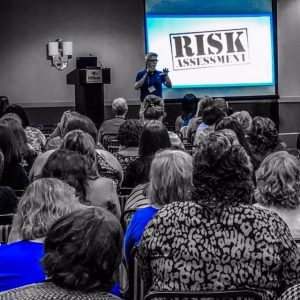
This week I had the privilege of discussing hospital and clinic security at the Quad States Health Information Management Association’s Annual Conference in Myrtle Beach, SC. There were a ton of very friendly, smart and detailed stewards of our health information that are very concerned about patient data, particularly in regards to security and privacy of that information.
About 100 health information professionals showed up bright and early Monday morning for my talk on why HIPAA is failing when it comes to keeping data secure. Part of my discussion struck a chord with these folks. You see, many folks in medical records, billing and other information-related positions within healthcare facilities, recognize the clear and present dangers when it comes to transferring data facility to facility (think HL7 for instance).
Just for a second, imagine that you could develop a communication interface between health systems or facilities.
You test to verify that data you send from your facility’s EHR platform goes through to some of your business associates and providers. Let’s assume that the exchange of information between platforms was seamless (we all know that HL7 and interexchange of information is a HUGE problem in health information and data management). For the sake of this discussion, let’s assume that HL7 worked perfectly in how systems integrated and communicated with each other.
You send out some data on patient stays to your collections vendor. You have a VPN set up so that billers and other vendors have a fast pass onto your network to speedily process or use your data. But at the point where the data moves between your facility and that other facility, you no longer have control over it.
I understand the cheapest and easiest solution for vendors to get connections to your network is through a Virtual Private Network (VPN), but in today’s world of cyberattacks, are you doing enough?
What ALL of those vendors are missing when they have VPN carte-blanche access to your network and data is if their data security is not to your standards and they end up having infected computers or servers with a ransomware virus, they can most certainly infect you, too!
And we’ve seen this happen with EHRs, medical billing companies, lab connections and even PACS.
The bottom line: even if HL7 is working the way it originally was described through seamless connections, if you aren’t evaluating how data is coming in and leaving your network—even to vendors you’ve worked with for years—you may be risking it to ransomware and cyberattacks if you don’t monitor your VPN connections.
The problems we see with facilities today:
Health information professionals are a significant asset to the health community. Could you even imagine a health system without data? These folks are making huge contributions to how facilities are run and ensuring that data integrity and privacy are enforced. And as security experts, we are equally concerned with organizations like the Quad States Health Information Management Association, along with the American Health Information Management Association, as to privacy and security of healthcare data.